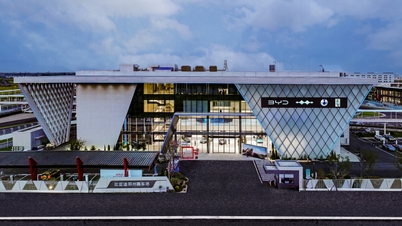This is also an opportunity for us to review and strengthen policies on training, skill development, and the cultivation of a strong workforce, contributing to building a sustainable, knowledge-based economy that is also internationally integrated.
In his article "Vietnam is one, the Vietnamese people are one," commemorating the 50th anniversary of the Liberation of the South and the reunification of the country, General Secretary To Lam stated that the new era we are entering – with artificial intelligence (AI), digital transformation, green economy, and sustainable development – demands new thinking, new development models, and new people.
Recently, the Politburo issued Resolution 57-NQ/TW, identifying science, technology, innovation, and digital transformation as top breakthroughs to promote national development. In this context, building a high-quality workforce that is both technologically savvy, possesses data management skills, and has the ability to organize and implement digital transformation has become an urgent requirement and can be considered a new driving force for the nation.
According to experts, the crucial role of semiconductor and AI core technologies in global development has been clearly demonstrated as factors shaping the future of humanity. Vietnam is facing a great opportunity to participate deeply in the technology value chain, thanks to its advantages in human resources and strong support policies.
Vietnam has great potential to participate deeply in the global value chain thanks to its young workforce and the increasing presence of large corporations. Vietnam is also facing a great opportunity in the global semiconductor revolution.
However, Vietnam's biggest challenge today is the shortage of high-quality human resources. It is estimated that Vietnam needs to train 50,000-100,000 semiconductor engineers to meet development needs. The government has also issued two strategic decisions aimed at promoting the development of the semiconductor industry and training high-quality human resources for this sector.
Vietnam's workforce is estimated to reach 53.2 million people by 2025, with a positive structural shift; the proportion of agricultural workers has decreased sharply to 25.8%; and the quality of human resources is constantly improving with 70% of the workforce having received training.
We have focused on developing high-quality human resources to meet the demands of the fourth industrial revolution in key areas such as semiconductor industry, AI, and information technology; initially forming a workforce with increasingly sophisticated digital thinking and skills. But that alone is not enough; we need to accelerate the training of highly skilled technology personnel.
More than ever, the link between universities, businesses, and the government in developing human resources for the semiconductor industry needs to be strengthened. Enhancing practical training programs, closely linked to major global technology centers, is crucial to narrowing the gap with developed countries. Training human resources to meet the demands of the technological revolution and digital transformation must be aligned with business realities to shorten the gap between education and the labor market.
To achieve breakthroughs in the technological era, Vietnam must start with its people – with well-trained engineers who are ready to integrate and master core technologies.
Source: https://www.sggp.org.vn/tang-toc-dao-tao-nhan-luc-cong-nghe-trinh-do-cao-post793365.html




































































































Comment (0)